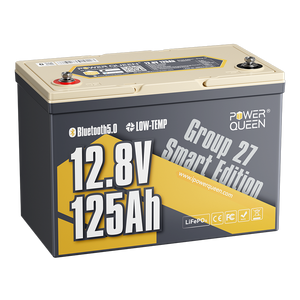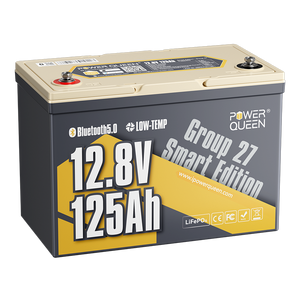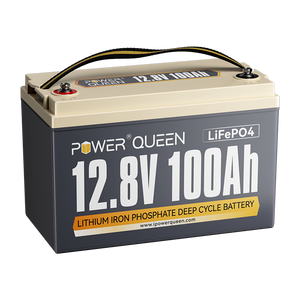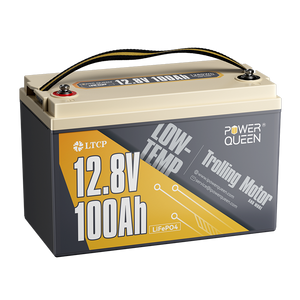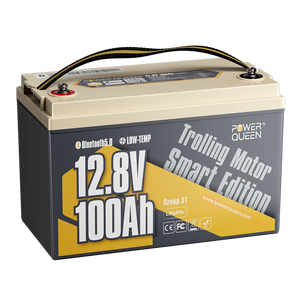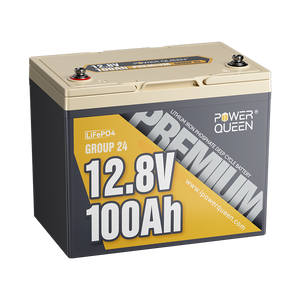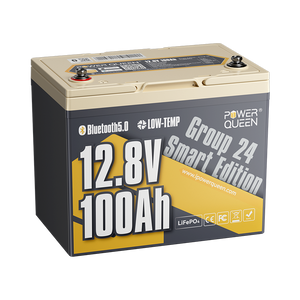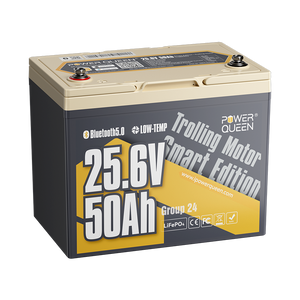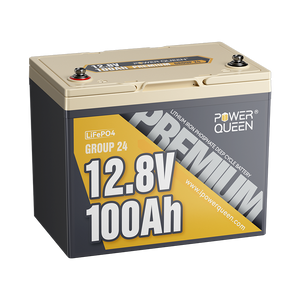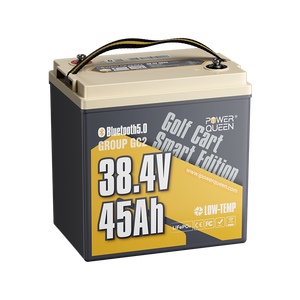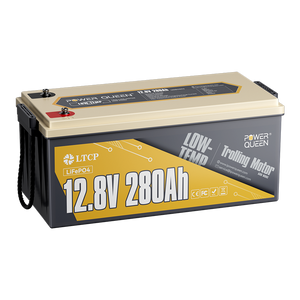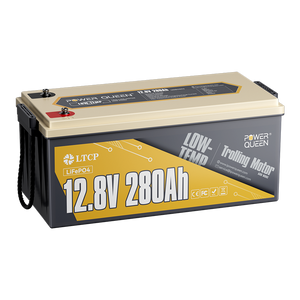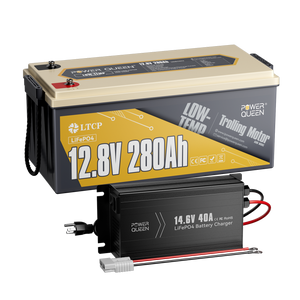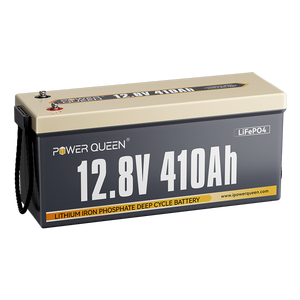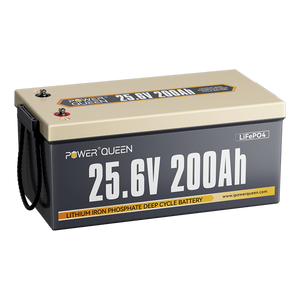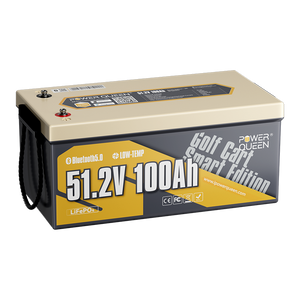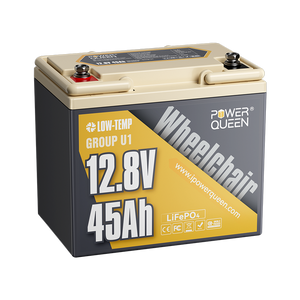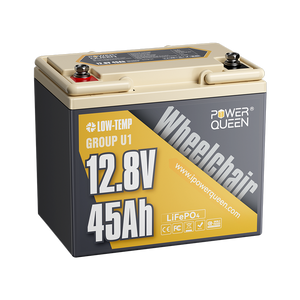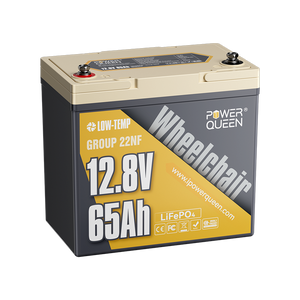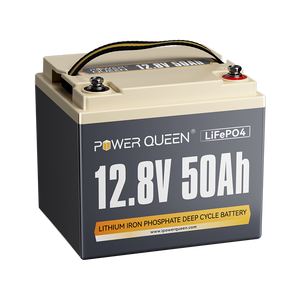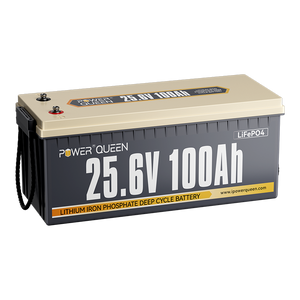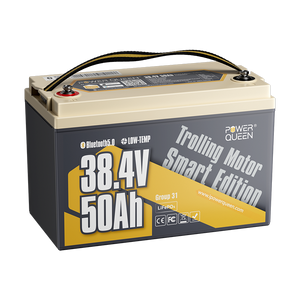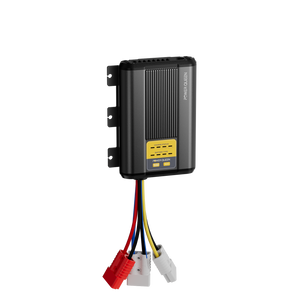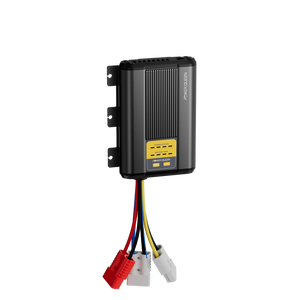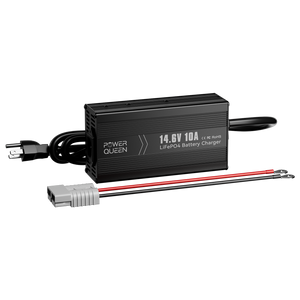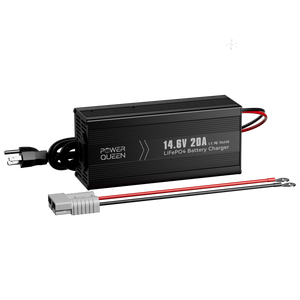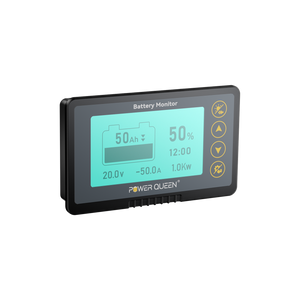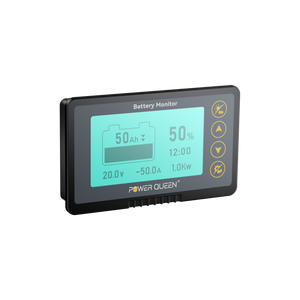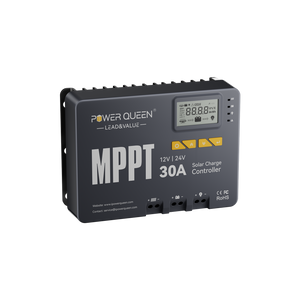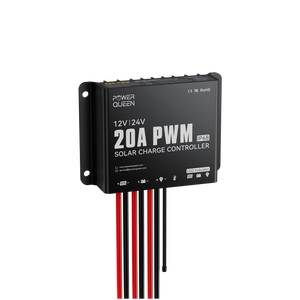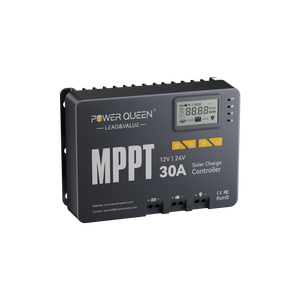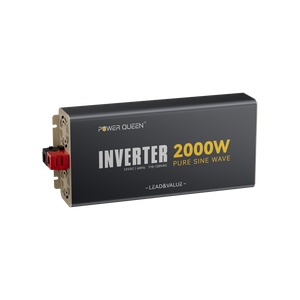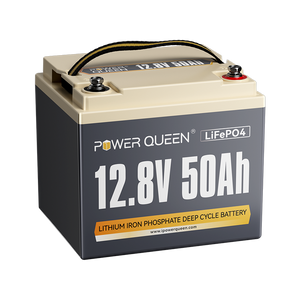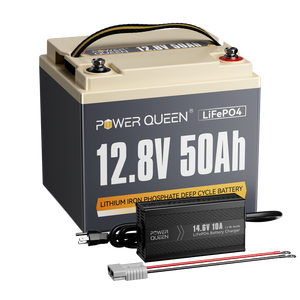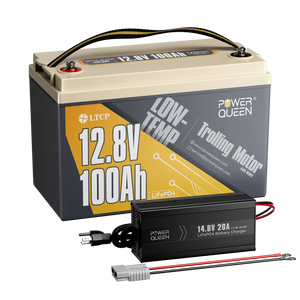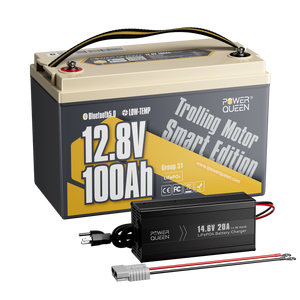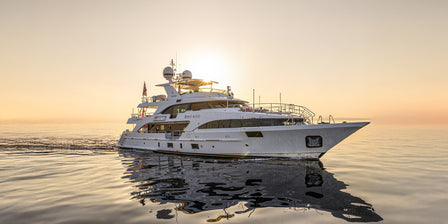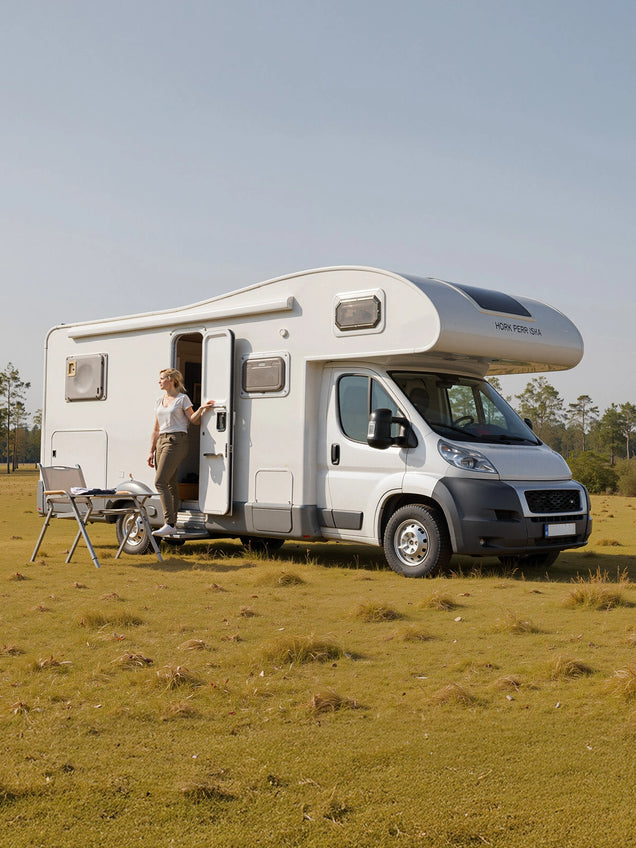Do You Know What Size Marine Battery Pack You Need?
Greetings, all! This week on our blog, we delve into the Marine Battery Group Size Chart.
The demand for power on boats is significant, with marine batteries being essential for enhancing your vessel's performance on the water. These batteries power your electronics, navigation systems, and engine ignition. Choosing the right marine battery is crucial for ensuring smooth and effective boat operation.
Join us as we present Power Queen's comprehensive guide to marine battery pack size charts, outlining which lithium batteries are compatible. We trust this blog will prove beneficial to you.
What Is A Marine Battery
The types of marine batteries are including starter and deep cycle.
Marine starter batteries, also known as marine cranking batteries or marine engine start batteries, fall under the category of lead-acid batteries meticulously designed to kickstart boat engines. These batteries are intricately crafted to supply sufficient cranking amps (CA) and cold-cranking amps (CCA), ensuring swift ignition of boat engines.
On the other hand, a deep cycle marine battery is engineered to provide sustained power over extended periods, making it ideal for situations requiring reliable and consistent energy, especially in marine settings. Designed to endure numerous charging and discharging cycles, these batteries sustain optimal performance, ensuring dependable operation for a diverse array of marine electronics, navigation systems, and onboard utilities.

For those interested, here's a link to purchase deep cycle marine batteries.
Key Takeaways
- Choosing the right marine battery group size is vital for ensuring a proper fit and meeting your power needs.
- Familiarity with these sizes helps you select a battery that provides optimal performance, capacity, and cranking amps for your marine requirements.
- The marine battery size chart offers an overview of BCI group sizes, assisting in making informed decisions. Generally, larger group sizes correspond to greater battery capacity, regardless of the battery type.
- Regular maintenance and inspection are crucial for maintaining reliable power and extending the battery's lifespan.
What Does Group Size Mean?
Group size acts as a standardized classification system, indicating a battery's physical dimensions and terminal placement, thus determining its compatibility with specific vehicles or machinery. Maintained by organizations like the Battery Council International (BCI) for automotive and marine batteries, this uniform code ensures consistency and interchangeability among batteries manufactured by different companies. Understanding battery group sizes is crucial for selecting the perfect battery to power various devices.
The Difference Between A Regular Battery and A Marine Battery
Marine batteries are designed with thicker internal lead plates in comparison to car batteries, allowing them to release energy slowly over prolonged periods. This characteristic is specific to deep cycle batteries, distinct from starting batteries. Moreover, their casings are typically larger than those of comparable car batteries, incorporating extra plastic shielding. This additional protection is essential due to the harsher conditions encountered in boating environments, which differ significantly from the smoother surfaces of on-road driving.
The Group Size Chart
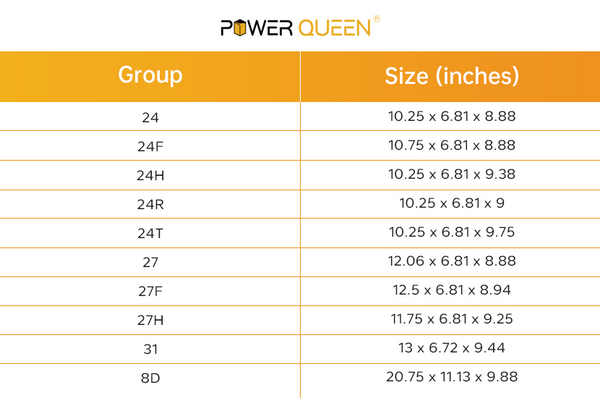
Group 24 Battery Vs Group 27 Battery
1. What is a Group 24 battery and a Group 27 battery?
The Group 24 battery represents a prevalent standard model, measuring 10.5 inches in length, 6.1875 inches in width, and 8.875 inches in height. This specific battery size is commonly encountered in various vehicles, backup power systems, and medical equipment. Typically, Group 24 batteries are utilized as deep cycle batteries rather than for engine starting purposes.

Conversely, the Group 27 battery is also a standard model, measuring 12.5 inches in length, 6.75 inches in width, and 9.37 inches in height. This battery size sees extensive use in automotive, marine, off-the-grid, RVs, and similar applications, including backup power systems. Compared to the Group 24 battery, the Group 27 battery is larger in size.
2. Comparison between group 24 battery Vs group 27 battery
(1) Battery Chemistry
Whether it's Group 24 batteries or Group 27 batteries, the most common BCI Group battery chemistries include Flooded Lead Acid (FLA) and Sealed Lead Acid (SLA).
- AGM (Absorbent Glass Mat) Batteries
- Sealed Lead Acid (SLA) Batteries
- Gel-cell Batteries
- Flooded Batteries
- Lithium-ion Batteries
Lead-acid batteries stand out as the most economical option among them. However, lithium batteries offer a longer cycle life and have garnered significant interest due to their eco-friendly nature and recyclability. If you're considering purchasing lithium batteries in group sizes, you can explore our selection of Power Queen lithium batteries.
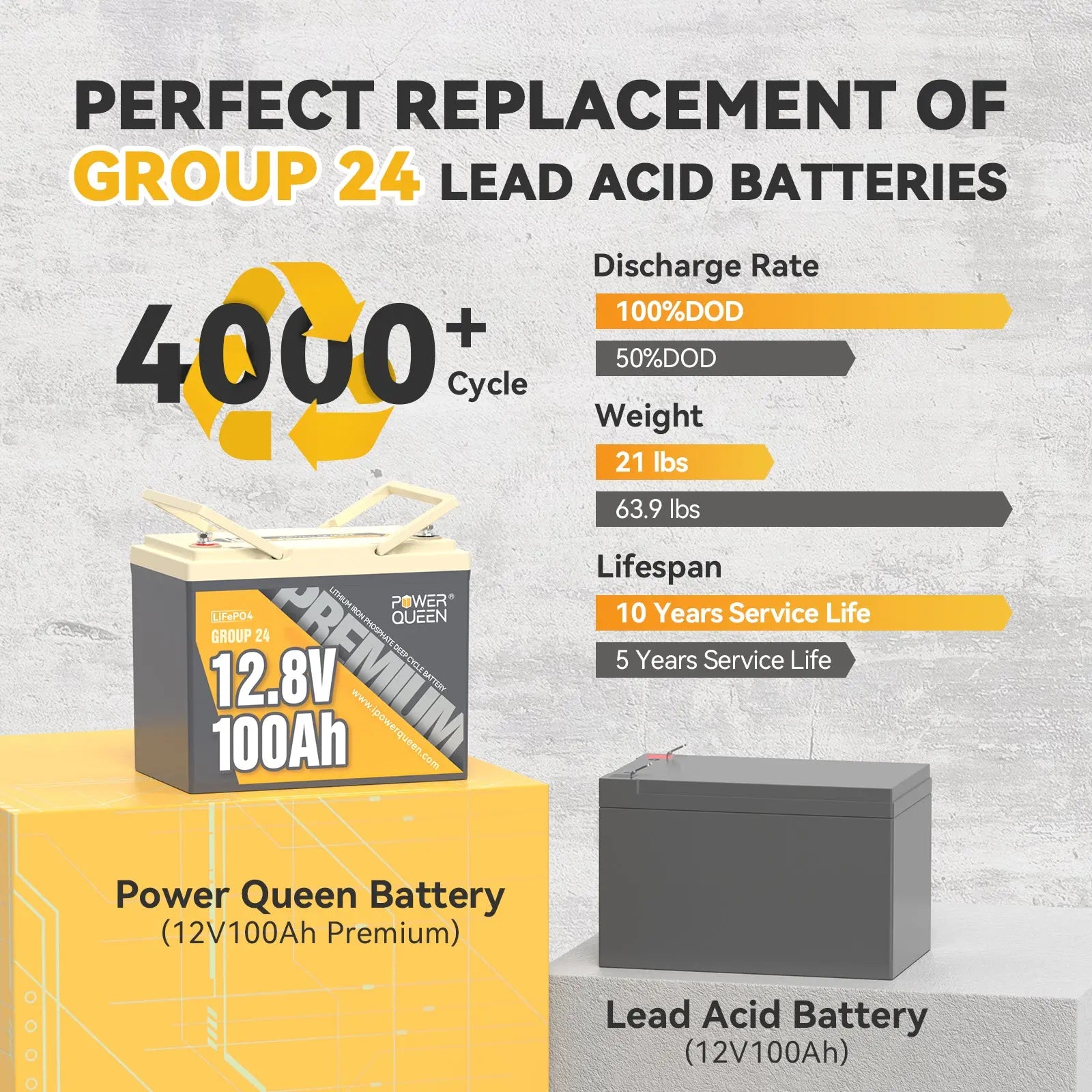
(2) Size
Group 24 batteries adhere to standard group dimensions of 10.25 x 6.8125 x 8.875 inches or 260 x 173 x 225 mm, while Group 27 batteries measure 12.0625 x 6.8125 x 8.875 inches or 306 x 173 x 225 mm.
Interestingly, they share identical width (6.8125 inches or 173 mm) and height (8.875 inches or 225 mm) but differ in length.
This indicates that battery compartments designed for Group 24 batteries typically cannot accommodate Group 27 batteries. However, compartments intended for Group 27 batteries may accommodate Group 24 batteries.
(3) Capacity
In contrast to Group 24 batteries, Group 27 batteries typically offer slightly higher capacities. Generally, battery group sizes with higher numerical values tend to provide more amp hours than those with lower values.
(4) Applications
Group 24 batteries are commonly utilized in various applications such as:
- Backup storage systems
- Large UPS systems
- Wheelchairs
- Medical and security systems
- Industrial applications
A deep cycle Group 24 battery, like the Power Queen Group 24 lithium battery, is upgraded to downsize for seamless compatibility with BCI Group 24 Size. This battery is 25% smaller than the Power Queen 12V 100Ah LiFePO4 Battery Group 31, making it well-suited for various motorhome battery casings such as Group 24/27/31 battery boxes. Despite the size reduction, the energy remains unchanged at 1.28kWh, increasing the energy density by over 40%. Compact yet powerful, it fulfills your energy needs, enhancing your lifestyle on the go.
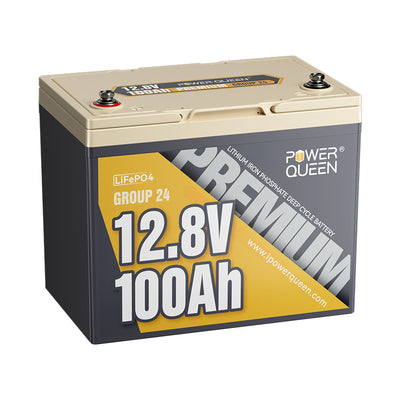


Conversely, Group 27 batteries find applications in off-grid setups, RVs, automotive, marine, and similar scenarios.
Are Group 27 and 31 Batteries the Same Size?
A Group 31 marine battery exceeds the dimensions of a Group 27, measuring 12.8 inches in length, 6.8 inches in width, and 9.3 inches in height. This slight increase in size allows for a higher power storage capacity, making it an ideal choice for boats equipped with advanced electronic systems and as house batteries in RVs and solar power installations.
AGM Group 24 Battery vs Lithium Group 24 Battery
1. Drawbacks of AGM Group 24 Battery:
- Prone to Overcharging: AGM batteries are susceptible to overcharging, which can result in diminished lifespan and potential damage if not adequately regulated by an appropriate charging system.
- Restricted Deep Discharge Capability: Although AGM batteries are engineered to manage deep discharges better than conventional flooded batteries, they still possess limitations in terms of discharge depth compared to alternative types of deep cycle batteries like lithium-ion.
- Temperature Sensitivity: AGM batteries can exhibit sensitivity to temperature extremes. Elevated temperatures may hasten aging and reduce lifespan, while extremely low temperatures can impair performance and capacity.
- Heavier Weight: AGM batteries typically weigh more than flooded lead-acid batteries of comparable capacity, posing a concern for applications where weight plays a critical role, such as in marine or RV use.
- Maintenance Needs: While AGM batteries demand less maintenance compared to flooded lead-acid batteries, they still necessitate periodic upkeep to ensure optimal performance and longevity, including regular charging and occasional equalization.
- Limited Availability: Depending on your location, AGM Group 24 batteries might not be as readily available as other battery types, potentially complicating replacement or spare sourcing efforts.
2. Advantages of Group 24 Lithium Battery:
- High Energy Density: Lithium batteries boast significantly higher energy density compared to traditional lead-acid batteries, enabling them to deliver more power in a smaller and lighter package. For instance, the energy density of a lithium battery is 61Wh/lbs, whereas that of an AGM battery is 52Wh/lbs.
- Longer Lifespan: Lithium batteries outlast lead-acid batteries, with many lithium variants rated for thousands of charge cycles, ensuring consistent power supply over an extended duration. For example, the Power Queen Group 24 battery boasts a lifespan of 4000+ cycles, equating to over 10 years of usage, whereas AGM batteries typically offer only 300-500 cycles.
- Fast Charging: Lithium batteries can be charged considerably faster than lead-acid batteries, resulting in shorter charging times and quicker turnaround between uses. Under similar conditions of deep discharge, lithium batteries require only 5 hours for charging, whereas AGM batteries take more than 8 hours.
- Deep Discharge Capability: Lithium batteries can be discharged to much lower levels without sustaining damage, providing increased usable capacity and flexibility in power consumption.
- Maintenance-Free: Lithium batteries demand minimal maintenance compared to lead-acid batteries, eliminating the necessity for regular watering, cleaning, or equalization.
- Lightweight: Lithium batteries are notably lighter than lead-acid batteries of similar capacity, making them ideal for weight-sensitive applications such as marine or RV use. Power Queen 12V 100Ah Group 24 batteries weigh a mere 21lbs, which is approximately 2/3 lighter than a 12V 100Ah AGM battery (63.9lbs).
- Temperature Tolerance: Lithium batteries exhibit excellent performance across a broad temperature range, rendering them suitable for deployment in extreme environments without significant performance degradation.
- Efficiency: Lithium batteries demonstrate high charge and discharge efficiency, resulting in minimal energy loss as heat during charging and discharging processes, thereby maximizing the utilization of stored energy.
- Low Self-Discharge: Lithium batteries possess a remarkably low self-discharge rate, enabling them to retain their charge for longer periods during periods of inactivity compared to lead-acid batteries.
- Compatibility with Renewable Energy Sources: Lithium batteries are well-suited for integration with renewable energy sources like solar or wind power due to their efficient and effective energy storage capabilities.
| Feature | AGM Battery | Lithium Battery |
|---|---|---|
| Energy Density (Wh/lbs) | 52 | 61 |
| Lifespan (Cycles) | 300-500 | 4000+ |
| Charging Time (under deep discharge) | More than 8 hours | 5 hours |
| Deep Discharge Capability | Limited, more prone to damage | High, less prone to damage |
| Maintenance-Free | Requires regular watering, cleaning, equalization | Requires minimal maintenance |
| Weight of 12V 100Ah group 24 batteries (lbs) | 63.9 | 21 |
| Temperature Tolerance | Significant performance loss in extreme environments | Performs well across a wide temperature range |
| Efficiency | Lower charge and discharge efficiency, significant energy loss | High charge and discharge efficiency, minimal energy loss |
| Low Self-Discharge | Relatively higher self-discharge rate, faster discharge when stored for extended periods | Very low self-discharge rate, holds charge for longer periods |
| Compatibility with Renewable Energy Sources | A reliable choice for pairing with solar panel systems In some cases | Suitable for use with renewable energy sources such as solar or wind power |

These benefits establish Group 24 lithium batteries as a favored option across a spectrum of applications, encompassing marine vessels, recreational vehicles (RVs), off-grid solar setups, and electric vehicles (EVs).

To conclude, lithium batteries have emerged as the top preference for numerous consumers seeking a more environmentally conscious battery option. Power Queen's lithium battery products are presently featured in a sizzling promotion. Interested friends should seize this opportunity without delay!
FAQs about Marine Battery Group
1. What group size does a marine battery belong to?
While the BCI group size spectrum covers various sectors such as passenger cars, electric vehicles, and commercial batteries, our focus today revolves around sizes primarily used in marine applications. These include batteries classified under Group 24, Group 27, Group 31, and 8D.
2. How does Group 31 differ from Group 34 marine batteries?
The Group 34 marine battery slightly surpasses the dimensions of the Group 31. It measures 13.5 inches in length, 6.8 inches in width, and 9.3 inches in height.
3. What types of marine batteries are available?
There are four chemical types of marine batteries tailored for diverse applications: flooded, gel, Absorbed Glass Mat (AGM), and lithium.
Conclusion
The marine battery market offers a range of options, including three standard sizes: 24, 27, and 31. We suggest evaluating the cabin size before selecting a battery size for purchase. Opting for the most suitable size is paramount. Furthermore, you have the option to upgrade from an AGM group 24 battery to a lithium group 24 battery to experience enhanced benefits!
